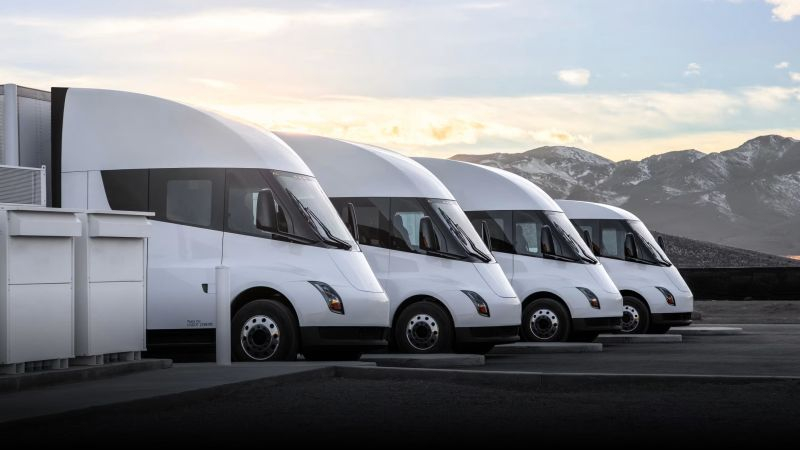Tesla has until recently been too busy ramping up production of the Cybertruck electric pickup truck to be distracted by introducing other models to the market, but next year it finally intends to begin mass production of the Semi truck. As part of the trial operation, one of the vehicles has already covered 400,000 km, and the electricity consumption of 1 kWh per 1 km of travel turned out to be lower than expected.

Image Source: Tesla
Since the bulk of Tesla Semi electric trucks are now operated either by the company itself or by a limited number of customers, it is quite difficult to understand the entire economics of the process, because the manufacturer has not yet announced how much the version of the vehicle with a cruising range of 800 km might cost. Secondly, to recharge trucks you need powerful express terminals, which are also quite expensive. However, at the IAA Mobility event, a Tesla representative has already given a presentation on the high efficiency of transportation using Semi electric long-haul tractors.
Firstly, over the past year and a half since the start of their operation in real conditions, one of the cars has run 400,000 km, proving acceptable reliability. Tesla’s own fleet of such trucks has collectively traveled 12 million km during this time. Moreover, Tesla notes that the average daily mileage of one tractor reaches 1,700 km, and 95% of the time it is on the road. In other words, charging and maintenance takes no more than 5% of the time. However, such achievements are only possible if trucks are charged at special powerful DC stations, which are not yet so common even in the United States.
At the time of the presentation of the Tesla Semi, the company expected that a loaded car would consume an average of 1.7 kWh per mile driven, but the actual figure was 1.6 kWh per mile driven. In other words, the truck consumes 100 kWh per 100 km. How acceptable this indicator is for transport companies will depend on the cost of diesel fuel and electricity in a particular region. Tesla has promised to increase deliveries of Semi trucks this year, but their mass production will only begin after the commissioning of a plant in Nevada, which is currently being built. By 2026, the company plans to increase production to 50,000 trucks per year.